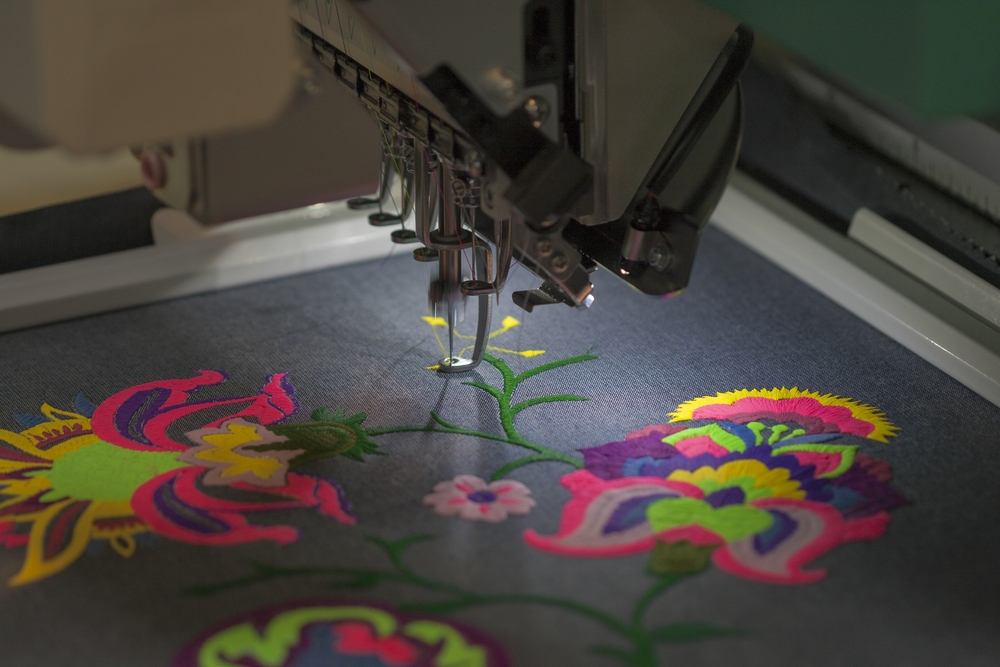Expert Digitizing for Embroidery: Quick and Reliable Service
Simplifying the Art of Needlework Digitizing: Step-by-Step Overview
As modern technology continues to development, the digitization process has come to be extra obtainable, allowing lovers to bring their complex layouts to life with ease. In this guide, we will decipher the intricacies of needlework digitizing, breaking down each action systematically to streamline the process and equip both novices and experienced embroiderers alike.
Comprehending Needlework Digitizing Software Application
Embroidery digitizing software program acts as a vital tool for transforming detailed styles into digital styles compatible with embroidery machines, helping with exact sewing and personalization. This specialized software enables individuals to import different image data styles, such as JPG or PNG, and convert them into embroidery machine-readable formats like DST, EXP, or PES - Digitizing for Embroidery. By utilizing features like stitch editing, rug choices, and string color option, digitizing software program enables users to manage every facet of the style procedure
Furthermore, progressed needlework digitizing software uses devices for producing complicated designs, readjusting stitch density, and integrating complex information. Customers can also preview the design before sewing it out, guaranteeing accuracy and lessening mistakes. In addition, several software application programs supply automated attributes that help streamline the digitizing process, saving time and initiative.
Comprehending the capabilities of embroidery digitizing software program is vital for accomplishing high-quality lead to embroidery projects. By mastering this tool, needlework lovers and experts can release their imagination and bring elaborate styles to life with precision and efficiency.

Selecting the Right Style File
After acquainting on your own with the capabilities of needlework digitizing software application, the following critical action in the procedure is picking the best style apply for your task. Digitizing for Embroidery. When choosing a style apply for embroidery digitizing, it's vital to think about the intricacy of the design, the dimension of the end product, and the kind of fabric you will be dealing with
For elaborate styles with great details, a high-resolution image or vector documents is advised to make certain that the needlework device can precisely reproduce the layout. Furthermore, the dimension of the final item plays a considerable duty in choosing the right style documents. Larger designs might call for greater resolution documents to keep clarity and intensity.
Furthermore, the kind of material you will be stitching on affects the selection of style documents. Various textiles may require changes in the layout data to guarantee that the stitches are appropriately lined up and the layout appears as meant. By thoroughly choosing the best layout data based on these elements, you can establish on your own up for a successful needlework digitizing procedure.
Digitizing Tools and Methods
Using specialized software program and precision strategies, digitizing devices are important in transforming complex styles right into embroidery-ready files. Needlework digitizing software, such as Wilcom, Hatch, or check out this site Embrilliance, offers the necessary system to convert artwork into stitch information. These programs use attributes like stitch editing, rug options, and text tools to make sure the design equates flawlessly onto fabric.
One of the vital techniques in digitizing is developing a clear path for the needlework device to comply with. This includes digitizing each element of the style with precision, identifying stitch kinds, densities, and directions. By using devices like digitizing tablet computers or software-specific plugins, embroiderers can achieve a high degree of precision in their digitized styles.
In addition, mastering the art of rug stitching is essential for generating high quality embroidery. Underlay sewing stabilizes the fabric and develops a structure for the design, guaranteeing that the end product is both visually attractive and long-lasting. By understanding these digitizing devices and methods, embroiderers can boost their craft and bring intricate layouts to life with accuracy and effectiveness.
Tailoring Stitch Types and Instructions
The choice of stitch kinds can considerably influence the overall look and appearance of the stitched layout. By strategically combining these stitch types, embroiderers can achieve deepness and dimension in their styles.
Additionally, the direction of stitches plays a critical function in enhancing the visual allure of the last embroidery. Numerous stitch instructions can add structure, emphasize certain aspects, and create visual interest. Transforming the angle of stitches can replicate movement or all-natural patterns like hair or plumes. By explore various stitch angles and official source patterns, embroiderers can bring their styles to life with exceptional information and details. Understanding the art of customizing stitch types and instructions empowers embroiderers to unleash their imagination and boost the quality of their job.
Screening and Refining Your Digitized Design
To make sure the precision and quality of your digitized design, detailed screening and improvement are crucial actions in the needlework digitizing process. When you have finished the digitization of your layout, it is crucial to test it before waging the real embroidery. Checking allows you to recognize any type of possible problems such as thread breaks, stitch density issues, or layout distortions that may affect the outcome.

After screening, it is essential to refine your digitized style based upon the responses from the examination sew-out. This may include tweaking stitch settings, adjusting densities, or making adjustments to the total design to accomplish the view publisher site preferred end result. By repeating via screening and refinement, you can adjust your digitized layout to excellence prior to progressing with the actual embroidery procedure.
Conclusion
In final thought, understanding the art of needlework digitizing calls for a detailed understanding of the software application, picking the ideal layout documents, making use of digitizing devices and strategies, personalizing stitch kinds and instructions, and testing and refining the digitized layout. By complying with these steps, embroiderers can simplify the digitizing process and develop high-grade stitched layouts with accuracy and effectiveness.